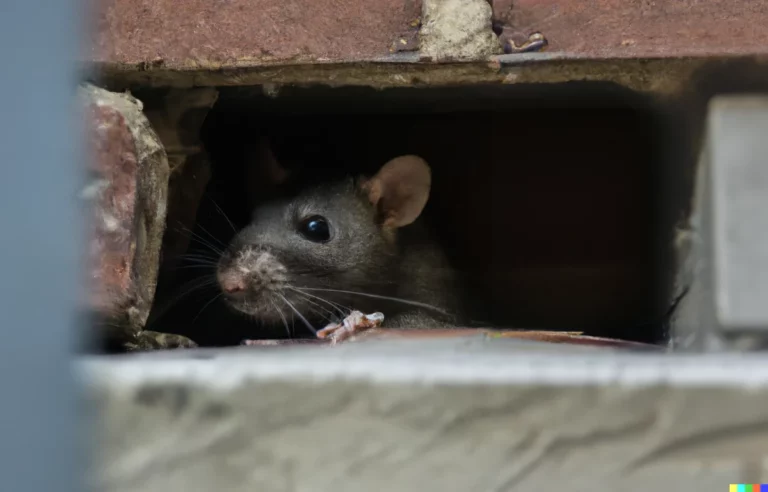Table of Contents
ToggleHave you ever discovered mice in your home, despite the absence of apparent entry points? Interestingly, certain species can squeeze into a hole just one-fourth of an inch in diameter, which is smaller than a nickel. So, you may wonder, do mice have bones? Let’s delve into this intriguing question, as it may shed light on their uncanny ability to infiltrate diminutive spaces.
Let’s take a closer look at the anatomy of mice to better understand this mystery.
Do Mice Have Bones?
Indeed, mice possess bones. Despite their minuscule size and the astonishing capacity to contort their bodies into unimaginable shapes, mice maintain a complete skeletal framework. They are, after all, vertebrates.
The skeletal system of a mouse serves the same functions as it does in other animals, providing structural support, protection, and form. A close observation of a mouse reveals an elongated skull that culminates in a snout.
Mice exhibit numerous bones analogous to humans, such as back vertebrae, scapulae, metatarsals, among others. Even mouse tails harbor bones.
Despite the complexity of their skeletal system, misconceptions regarding their anatomical structure have flourished. For instance, a long-standing myth asserts that mice have collapsible skeletons, particularly skulls. This notion is entirely unfounded.
A mouse’s skeleton is sheathed by musculature, tendons, and ligaments, meaning it cannot collapse for greater maneuverability. This is especially pertinent to the skull; a mouse simply cannot compress its cranial bones without jeopardizing the brain!
What is the Bone Count in Mice?
Many are curious about whether mice harbor numerous or minimal bones. As stated, mice possess a variety of bones analogous to humans. In fact, excluding the bones in their tails, mice exhibit a similar bone count to humans.
On average, a mouse boasts between 225 and 231 bones, which surpasses the human tally of 206 bones. Over 20 of these bones, however, reside in the tail, which may account for the discrepancy.
As evidenced, mice host an abundance of bones. Their skeletons are not only intricate but also sturdy enough to provide protection and form. Yet, these bones possess additional characteristics worthy of exploration.
What Allows Mice to Squeeze into Compact Areas?
A prevailing myth speculates that mice are devoid of bones, as their ability to squeeze into tight spots seems to support this theory. However, while mice do not feature a collapsible skeleton, their bones do possess a certain quality that facilitates this maneuverability: flexibility.
Specifically, the areas between their back vertebrae and ribs exhibit significant flexibility. These bones can effortlessly bend temporarily, enabling mice to navigate narrow gaps with lesser resistance compared to other mammals. This striking flexibility often misleads observers into thinking mice are boneless.
Consequently, the only real limitation on mice’s mobility is their inflexible skull. As a result, a mouse can only penetrate holes and gaps that accommodate its head size.
Given their smaller size compared to rats, mice can infiltrate an array of places. Consequently, they are frequently observed in human-dominated spaces. However, even rats manage to find their way into surprisingly small spaces.
What is the Smallest Hole a Mouse Can Infiltrate?
Throughout their lifespan, mice can traverse holes of diverse sizes. Yet, as they age, they lose the ability to navigate the same spaces as they could in their youth.
Studies demonstrate that juvenile mice can penetrate holes approximately the width of a pencil or pen. This implies that a hole of such diminutive size in your home could serve as an entry point for a young mouse. Adult mice, albeit significantly larger, retain their proficiency at navigating compact spaces.
Almost any adult mouse can wriggle through a hole the size of a quarter. Many can squeeze through a hole the size of a nickel, while some even manage a dime-sized hole. The latter may require a bit more time, but adult mice remain impressively adept at utilizing small gaps for navigation.
Strategies to Deter Mice from Entering Your Home
Understanding how effortlessly mice can infiltrate your dwelling may motivate you to adopt preventative measures. Here are some steps to make your home less accessible to these tiny intruders.
- Conduct regular inspections for indicators of mouse activity such as droppings, nests, or scratching sounds.
- Eliminate attractions by sealing all food sources, including pet food.
- Maintain cleanliness by regularly sweeping your counters, cabinets, and floors to minimize food residues.
- Limit plant growth around your house to reduce potential hiding spots.
- Repair holes in your brickwork with cement.
- Seal small openings in your siding and doorways using caulk.
- Install weather stripping on your doors to prevent access.
- Consider deploying mouse repellent mixtures, whether homemade solutions such as fabric softener sheets or commercially produced ones.
- Implement ultrasonic devices around your home’s perimeter.
- Set traps to catch mice.
Each of these strategies will help deter mice from entering your home and manage any potential infestations.
Having resolved the question, “do mice have bones?”, it’s crucial to realize that while challenging, preventing a mouse infestation is not impossible. With the provided information, you should now understand the hole size a mouse requires to gain access to your home. By proactively sealing these openings, you can avert a potential mouse infestation.
Protect Your Space
Understanding the anatomy and behavior of mice is essential for effectively preventing infestations in your home. By recognizing their ability to squeeze through surprisingly small openings, you can take proactive measures to protect your space.
If you suspect a mouse infestation or want expert assistance in securing your home, don’t hesitate to reach out. At On Demand Pest Control, we specialize in identifying and eliminating pests, ensuring your home remains safe and comfortable. Contact us today for a thorough inspection and tailored pest control solutions. Let us help you keep those tiny intruders at bay!




